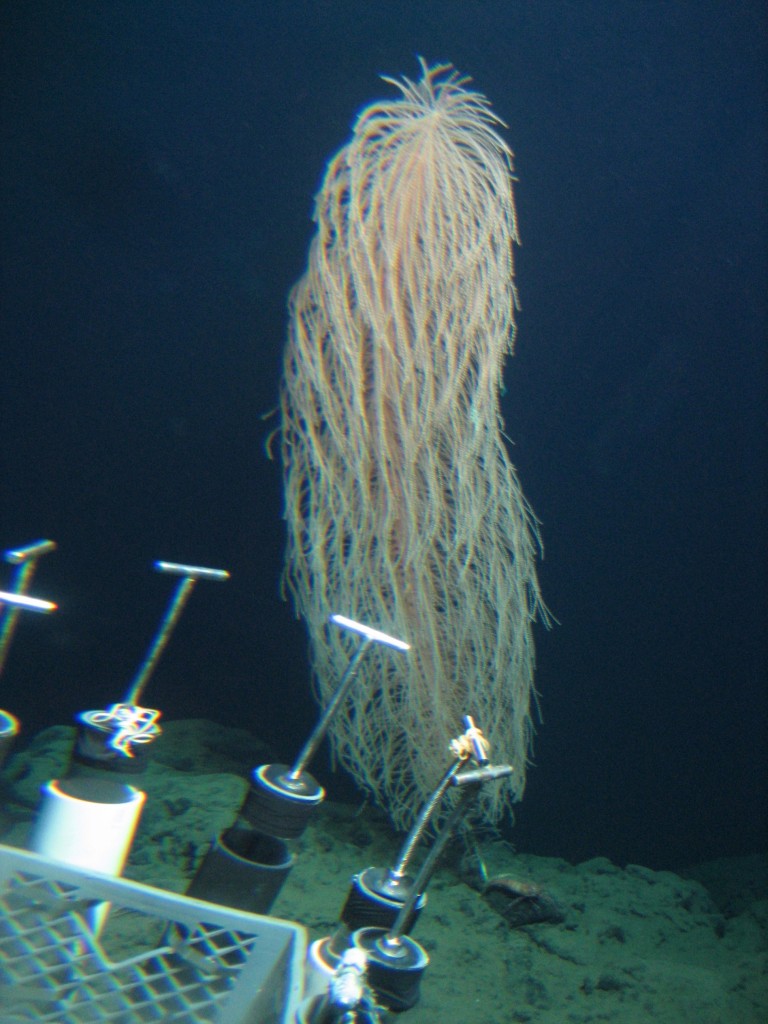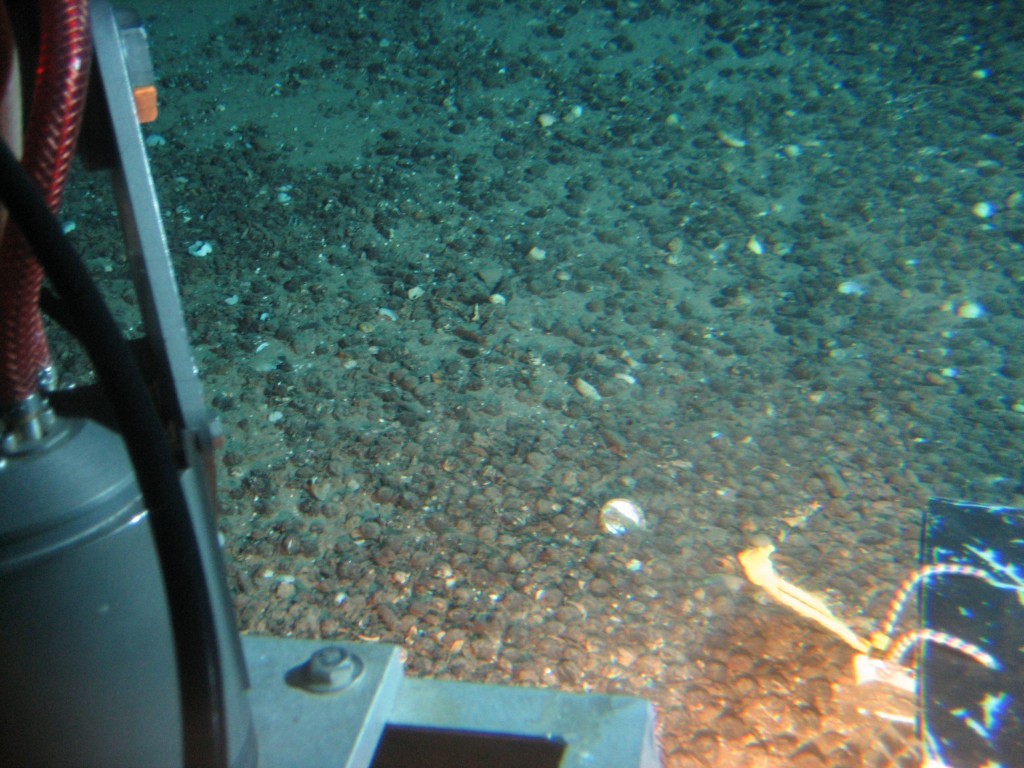
A coral relative called a gorgonian -- or in this case, Cousin It -- found off the coast of Moloka'i. Eric Vetter, Craig Smith & the Hawaii Undersea Research Laboratory
Have you ever wondered what happens to stuff that falls into the ocean from shore? Where does it go? What happens to it? Well, if it’s plastic or something else floaty, it’ll likely end up in some vast floating garbage vortex, as we apparently have, in our apathy, created in several locations on the planet. But what if it’s heavy, like tree nuts, waterlogged PBR cans, or a multimillion-dollar sapphire? The ocean is not a memory hole, and it turns out that (organic) stuff washed into the sea near shore collects in places that can help support a gaggle of interesting creatures.
Though teeming with bacteria and viruses, the Earth’s oceans are largely a desert for mobile megafauna (i.e. big things that swim, walk, crawl, scuttle, or ooze) like sharks, whales, fish, and cephalopods. Coral reefs are a well-known exception, but it turns that where this stuff goes is another darker, deeper source of biodiversity, and we’re not talking about deep-sea hot springs or Cthulu-esque spawning zones. A study in Marine Ecology by scientists at the University of Hawaii, Manoa, found that submarine canyons at remote Pacific islands may act as oases that funnel nutrients (and other debris) to the bottom in a way that creates a smorgasboard for big swimming or crawling things. They wondered if this would be so by analogy with studies of similar canyons on continental margins, but no one had ever looked in the canyons ringing a remote island chain before.
They started using submersibles that videotaped the bottom of canyons and control slopes nearby, but found there were too few things to look at for that to work. So instead, they sent people down in submersibles to essentially sit on either side and look out the window, calling out what they saw as they cruised along (I cannot imagine they had a hard time finding volunteers. I would pay to do that). They studied two groups of islands in the Hawaiian chain — two in the main group (O’ahu and Moloka’i) and two of the teeny tiny obscure northwest isles, Nihoa and Maro Reef, an atoll.
Though they hypothesized that the canyons on big islands would have more biodiversity than the canyons on little islands since there was theoretically more crap to roll off the island and into the canyon, they found this was not so. Nor was total biodiversity higher in canyons than on slopes. But they did find the biodiversity (both counted in absolute abundance and unique species counts) of big swimming or crawling things was enhanced in canyons compared to sedentary or sessile animals. On the other hand, sessile filter-feeders (like Cousin It, above) seemed to do better on the flat slopes between canyons. Why? They don’t know for sure but suspect it’s related to frequent turbidity currents and submarine landslides in canyons. Put simply, you’re less likely to get buried by one of those if you can swim or crawl out of the way. Once done, you are now in position to capitalize on the buffet brought in from above. And what a buffet! Take a look at this picture from the expedition.

Call Diamond: A bonanza of kukui nuts (from the candlenut tree, in the Spurge Family (Euphorbiaceae) in Moloka'i Canyon. Eric Vetter, Craig Smith & the Hawaii Undersea Research Laboratory
I half expected to see several lost socks and Jimmy Hoffa sticking out of that pile. Consider that this nut bonanza from trees growing on land was discovered 500 meters — 1,500 feet — below the surface! Canyons may also concentrate food by funneling in carcasses that drift from above and by concentrating plankton that migrate up and down over the course of a day.
As for the fantastic Cousin It look-alike they found, he is a gorgonian (or sea whip or sea fan). These little cnidarian high-rises are colonial polyps related to soft corals and sea pens(another of my favorite marine groups) within the phylum Cnidaria, a vast and unbelievably cool group that includes the jellyfish and portuguese men o’painwar. They build a skeleton of protein or calcium within which their little eight-tentacles polyps sit and wait for plankton and other tasty tid-bits to drift by. Some of them can take in algae called zooxanthellae like other coral and work symbiotically with them for food. Others (like those found at 650 m below the surface, like Cousin It) get by only on the sweat of their own tentacles.
Vetter, E., Smith, C., & De Leo, F. (2010). Hawaiian hotspots: enhanced megafaunal abundance and diversity in submarine canyons on the oceanic islands of Hawaii Marine Ecology, 31 (1), 183-199 DOI: 10.1111/j.1439-0485.2009.00351.x


{ 1 trackback }
{ 0 comments… add one now }